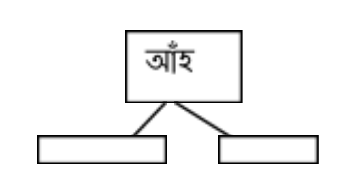| ১ম দিন
সময়: ২০ মিনিট কাৰ্যকলাপ ১: ছাত্ৰ-ছাত্ৰীয়ে বিভিন্ন সমল যেনে পাঠ্যপুথি, ইণ্টাৰনেট ইত্যাদিৰ যোগেদি ‘আদিম মানুহ’ৰ বিষয়ে অন্বেষণ কৰিব আৰু ‘আদিম মানুহ’ৰ বিষয়ে এটি গল্প লিখি শিক্ষকক দেখুৱাব/তেওঁলোকে গল্পটো পৰিয়ালৰ সদস্যসকলক ক’ব পাৰে। সংশ্লিষ্ট সমল লিংক: ছাত্ৰ-ছাত্ৰীয়ে প্ৰদত্ত লিংকত ক্লিক কৰি ‘life of early man’ (‘আদিম মানুহৰ জীৱন’) ৰ ভিডিঅ’ চাব পাৰে : সময়: ২০ মিনিট কাৰ্যকলাপ ২: ছাত্ৰ-ছাত্ৰীয়ে পাঠটো মনোযোগেৰে পঢ়িব আৰু নিজৰ শংকাবোৰ চিহ্নিত কৰিব আৰু ফোন যোগে বা WhatsApp group ত শিক্ষকৰ সৈতে আলোচনা কৰিব।
|
| ২য় দিন
সময়: ২০ মিনিট কাৰ্যকলাপ ৩: ছাত্ৰ-ছাত্ৰীয়ে মানৱ সভ্যতাত ‘জুইৰ’ গুৰুত্বৰ বিষয়ে ১৫০ শব্দৰ ভিতৰত লিখিব (ই কেনেদৰে আৱিষ্কৃত হ’ল, মানৱ সভ্যতাত ইয়াৰ প্ৰভাৱ ইত্যাদি) আৰু তেওঁলোকৰ শিক্ষকক দেখুৱাব। ছাত্ৰ-ছাত্ৰীসকলে এখন প্ৰচাৰ-পত্ৰিকা (Poster) প্ৰস্তুত কৰিব পাৰে বা যদি তেওঁলোকৰ বাবে উপলব্ধ হয় তেতিয়াহ’লে মোবাইল ফোন Applications ব্যৱহাৰ কৰি এটা ভিডিঅ’ প্ৰস্তুত কৰিব পাৰে। সংশ্লিষ্ট সমল লিংক: মূল্যায়ণ: ছাত্ৰ-ছাত্ৰীয়ে তলৰ প্ৰশ্নৰ উত্তৰসমূহ নিজৰ টোকাবহীত লিখিব পাৰে আৰু শিক্ষকক দেখুৱাব বা এখন প্ৰচাৰ পত্ৰিকা (Poster) বা Multimedia Presentation বা এটি চুটি ভিডিঅ’ প্ৰস্তুত কৰিবলৈ Mobile Applications ব্যৱহাৰ কৰিব পাৰে। যদি আদিম মানুহে জুই আৰু সঁজুলিসমূহ তৈয়াৰ নকৰিলেহেতেন তেতিয়াহ’লে আমাৰ জীৱনত কি পৰিৱৰ্তন নঘটিলহেতেন? |
Click here to download the lesson plan
Prepared by: Dimbeswar Sarma, Namati Vidyapith Higher Secondary School, Assam;
Edited by: SrabantiBasak,, Nikhat Khan, ITE resource Team, TISS, Mumbai;
Translated by: Nitumani Kalita, Gramya Vikash Mancha (GVM), Nalbari, Assam.














